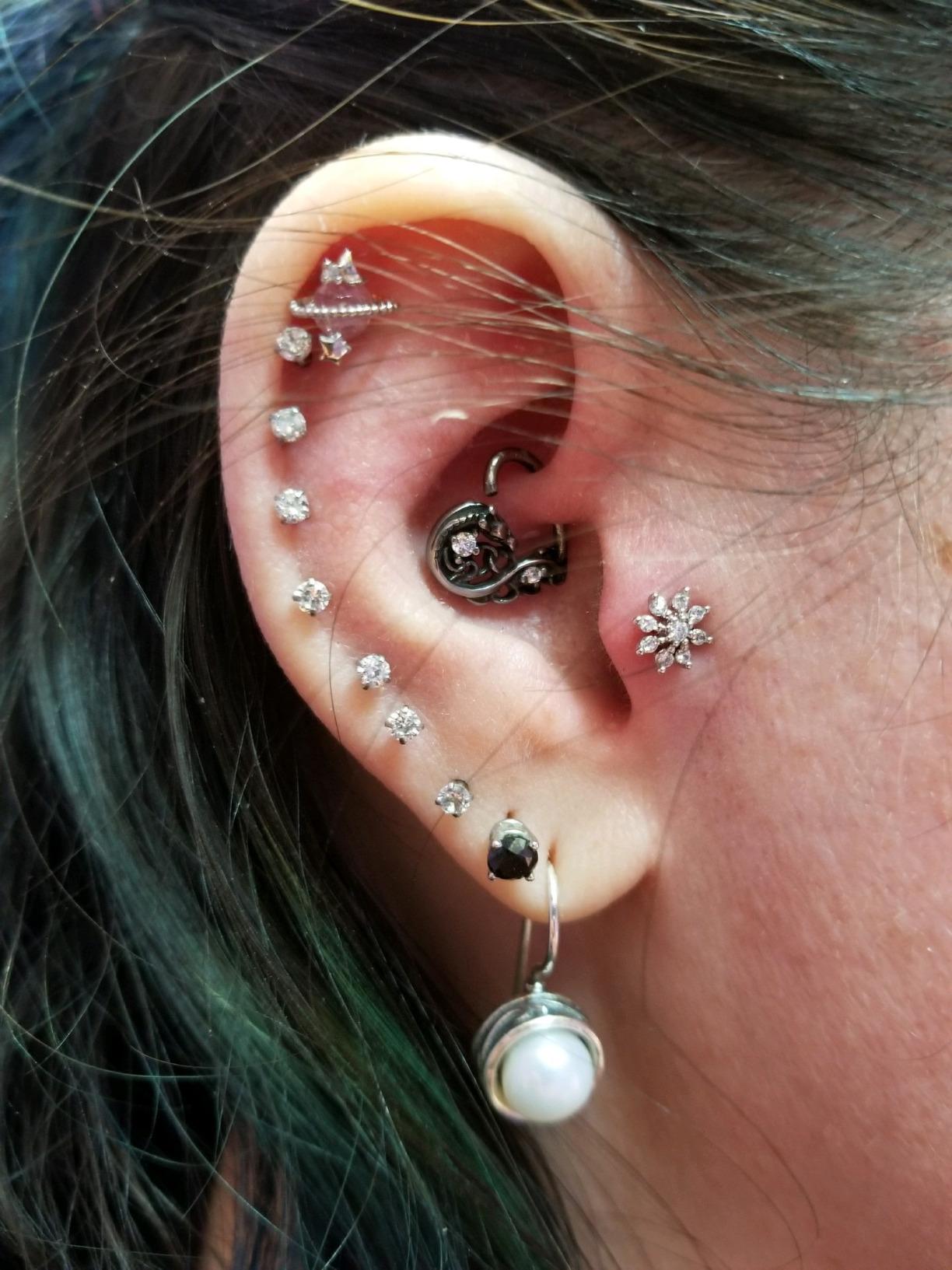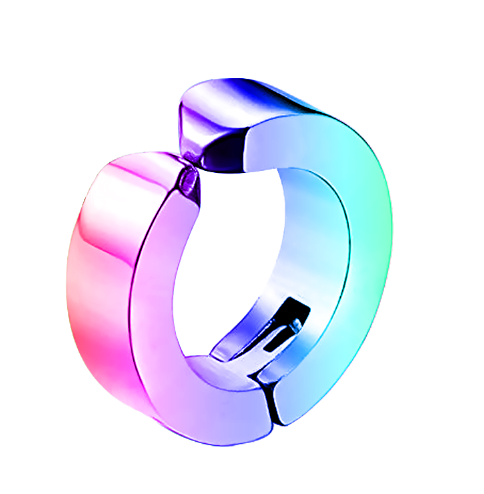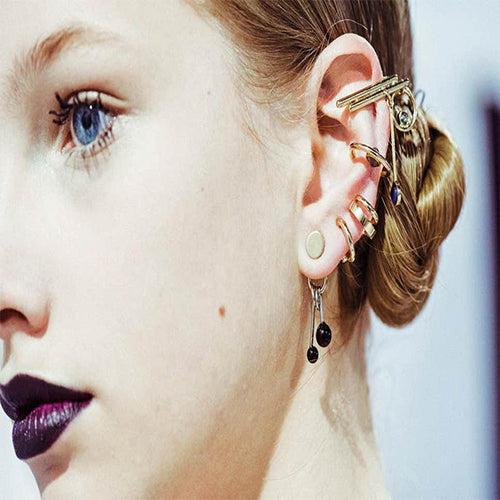
What are the different ear piercings called?
More and more people have the cartilage piercings but many people don’t know what are the different ear piercings called and there are quite a few different types of ear piercings. Now a full list of types of ear piercing follows. To see exactly where each ear piercing is placed on the ear, reference the ear piercing image below.
Anti-tragus Piercing
An anti tragus piercing is placed across from the tragus (see ear image above).
The stud and CBR or BCR like below image can be used for this position.
Daith Piercing
A daith piercing is placed through the cartilage immediately below the point where the helix connects to the head and the cartilage continues to curve in, this position can wear CBR, BCR, hinged hoop and other rings.
Earlobe Piercing
Any piercing of the lobule of the ear or the soft tissue that dangles down from the bottom of the ear— is considered an ear lobe piercing. Some people have a single standard earlobe piercing while others have multiple ear lobe piercings in a row. This position can wear stud or rings.
The placement of a forward helix piercing is directly above where a daith piercing would be, just above where the helix connects to the head, stud can be used for this position.
Helix Piercing
The entire upper rim of the ear is called the helix, but typically when someone refers to a helix piercing or cartilage piercing, they’re talking about the outer-top rim of the ear. Some people get double helix piercings and triple helix piercings, which are just multiple piercings in the same area, rings can be used for this position.

Industrial Piercing
An industrial piercing spans the top of the ear, entering through the back of the helix and exiting towards the top-front of the helix. The area it lays over top of is called the scaffold of the ear, which is why this is sometimes known as a scaffold piercing. Industrial barbell can be used for this piercing.
Conch Piercing
The conch is the inner scoop of ear cartilage that’s somewhat cup-shaped. A conch piercing is a piercing placed through this area of cartilage. Stud can be used for this position.
Orbital Piercing
An orbital piercing is actually two piercings side-by-side through part of the ear. A ring placed through the two holes appears to be orbiting through the ear. An orbital can be placed through the upper earlobe or even through the upper ear cartilage, directly below where an industrial piercing bar would run.
Rook Piercing
A rook piercing is placed through the upper-inner rim of ear cartilage that runs over top where a daith piercing would be placed.
Snug Piercing – A snug is a piercing of the anti-helix. Ring can be used for this piercing.
Tragus Piercing
A tragus piercing is a piercing of the lower flap of cartilage that connects to the head.
Transverse Lobe Piercing
A transverse lobe piercing is technically a surface piercing, because it goes through the earlobe at an angle rather than cleanly in one side and out the other. Transverse earlobe piercings are more likely to reject than standard lobe piercings, and they may cause significant damage to the earlobe if they migrate out.
Upper Lobe Piercing
Any piercing of the upper earlobe, where the skin is still soft and fleshy (i.e. the soft tissue immediately below the ear cartilage) is considered an upper lobe piercing.












1 comment
In it something is. Many thanks for the information, now I will not commit such error.
battery website
Leave a comment
This site is protected by hCaptcha and the hCaptcha Privacy Policy and Terms of Service apply.